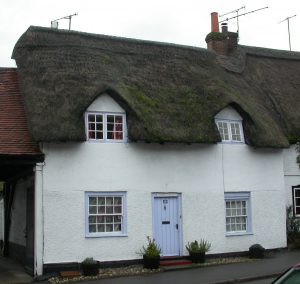
A late 16th century to early 17th century house in Wiltshire included in a study of lichens preserved on timber in pre-industrial buildings.
Lichens are a specialised group of fungi that are useful indicators of the state of the environment. The loss of various species sensitive to air pollution created by industrialisation is something that many school children will be familiar with. Recent research by RBGE lichenologist Rebecca Yahr on lichen communities in pre-industrial England is now shedding light on the magnitude of the impact.
Rebecca and co-workers, Chris Ellis and Brian Coppins, secured funding from the Leverhulme Trust to explore ‘Britain’s Lost Biodiversity.’ The birth of the project came with the realisation that old timber-framed buildings record within their fabric the lichen communities of past pre-industrial times. The smaller timbers often have the bark left in place and it is this that preserves a record of the lichens present at the time of harvest. The buildings are time capsules that allow scientists to look at past species diversity and compare it to what we see today. Opening the lid on historic species diversity from a time before descriptive science has been a wonderful opportunity for the team. The excitement of discovering lichens preserved on old timbers is clear when Rebecca talks about the project.
“Imagine our wonder when we found hundreds of instances of lichens from before the industrial revolution, preserved on the historic bark on timbers and wattles of old buildings.”
Comparisons of pre-industrial and modern distributions show the huge magnitude of losses in lichen species diversity – from 30% to over 80% of the lichen diversity of different regions is now missing from British landscapes. Scientists in the temperate zone are rightly concerned about recent losses in the tropics, but if we were to roll the clocks back to pre-industrial times, we would have witnessed similar losses on ground closer to home.
